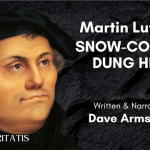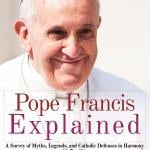Many essay collections seem to be a kind of topical potpourri – inklings and ideas from various scholars on a given topic. These end of being informative, but all-too-often they are forgettable. Once in a while, though, a book is conceived of, and contributors are commissioned, with a view towards driving the discipline away from something and/or towards something else.
I think of the book Richard Bauckham edited and promoted called The Gospels for All Christians (1998). As a result of the momentum behind that project, we are seeing much more caution regarding the use of the language of a “gospel community” (“Matthean community,” “Johannine community,” etc…). On a completely different topic, you have The Ways That Never Parted (Becker/Reed, eds, 2007), an essay collection that puts into question the idea of an early “parting of the ways” between Judaism and Christianity.
Well, editors Chris Keith and Anthony Le Donne have shown their moxy by taking on the popular approach to Jesus studies that involves the use of “authenticity criteria.” These two are not alone in their suspicion of the value of such criteria: they gathered, for a conference and publishing project, a number of eminent Jesus scholars who also wish to wield methodological sledgehammers and endeavor to cry out in freedom from form-critical tyranny (Jens Schroeter, Loren Stuckenbruck, Dagmar Winter, Rafael Rodriguez, Mark Goodacre, Scot McKnight, Dale Allison Jr, and, last but not least, Morna Hooker who wrote the foreward).
Hooker expresses the kind of skepticism towards the authenticity-criteria that is indicative of most of the contributors. She writes, “Perhaps…the time has come to abandon the whole enterprise of trying to discover the ‘real historical Jesus’ (xiv). Why is she wanting to throw in the towel? A large part of it has to do with the tendency to focus on words and phrases, which ends up being too “cut-and-paste” for good historical study.
As with an expressionist painting, what we need to do is to stand back from it, rather than poring over details, for the closer we get, the less we see the whole” (xv).
What is the alternative to the old tools? Hooker would rather opt for “plain common sense” (xvii)!
In the introduction of the book, Le Donne does a fine job of explaining the problem with the authenticity-criteria and surveying how the contributors approach a solution. Some wish to do away with the criteria completely and work with other models and methods (like memory studies). Others think that some of them can be salvaged.
When it comes to the rise of skepticism towards the authenticity-criteria, Le Donne notes two commonly voiced concerns.
The first is a reluctance to fragment, isolate, and then privilege certain units within the Gospels. To do so is to degrade other portions of the Gospels deemed less ‘authentic.’ The second is a reluctance to aim for historical facts devoid of interpretation. To do so is to misunderstand the relationship between fact and interpretation and to degrade the value of ancient interpretations for the historian’s task” (17)
Ch1: The Indebtedness of the Criteria-Approach to Form Criticism and Recent Attempts to Rehabilitate the Search for an Authentic Jesus (Chris Keith)
In this chapter, Keith persuasively argues that the criteria-approach has its roots in form criticism. However, as the guild of Jesus scholars has moved away from form-critical approaches and assumptions, it makes little sense to continue to live and die by the criteria. The criteria try to filter out the opinions and theological nuances of the evangelists. Keith is extremely hesitant to approach the gospels in this way.
Ch2: The Criteria of Authenticity in Jesus Research and Historiographical Method (Jens Schroeter)
Some of the concerns expressed by Keith are taken up by Schroeter in his essay. He is particularly concerned to point out that the evangelists were not only reporting on Jesus, but also using the gospels as a platform to speak to issues of their own time and context. Schroeter contends that it is impossible to uncouple these things in the text because they are integrated seamlessly: “[the gospels] have taken up their traditions and historical information about Jesus’ activity in Galilee and integrated them into their own narratives, making the Jesus story transparent for their own time” (68).
Chapters 3-7 make up a section entitled: “Specific Criteria in the Question for an Authentic Jesus”
Loren Stuckenbruck deals with problematic studies on “semitic influence on Greek.” Le Donne gives attention to “the criterion of coherence.” Dagmar Winter looks at “the criterion of dissimilarity.” Rodriguez puts into question the “criterion of embarrassment.” And Goodacre talks about “the criterion of multiple attestation.” I will not survey these chapters. They were all insightful, but regarding the demise of authenticity, the devil is not in the details as much as in the attitude towards historical research as a whole.
Chapters 8-9 comprise a section called “Reflections on Moving Past Traditional Jesus Research”
Chapter 8: “Why the Authentic Jesus Is of No Use for the Church” (Scot McKnight)
Since I read this chapter (a few months ago), I have thought a lot about what McKnight says: every Jesus is a theological Jesus (173). And I think he is right. What does he mean? “The Jesus we construct is the Jesus we more or less believe in” (174). For McKnight, the problem with Jesus research, as it has been traditionally taken up by the academy, is that it has had a long pedigree of trying to deconstruct the canonical Jesus.
The historical Jesus enterprise is designed to take apart the Church’s Jesus, Christology, and the Gospels in order to find what is historical — and that means really said or done by Jesus over and against what was not said or done –and then to construct an image of Jesus on the basis of what survives the test.” (175)
It is really important what McKnight says here. He is not against historical research. He has no bone to pick with Darrell Bock (who studies Jesus in his socio-historical context). He notes that critical Jesus scholars are not just de-constructing the canonical Jesus, but they are all reconstructing their own Jesus based on “evidence” and “coherence” (if they find any).
McKnight makes it crystal clear that this is of no use to the Church because “When the Jesus we have (re)constructed is no longer orthodox or the Jesus of the canonical Gospels or the Jesus of the regula fidei, the Jesus we have is no longer the Jesus of the church, and a Jesus who is not of the church is not a Christian Jesus” (176). I find McKnight’s argument stimulating, but I am not quite sure what the relationship is, in his mind, between the “Church’s Jesus” and the Jesus of history. Does it matter if they are not the same? Should we not even wonder?
Chapter 9: “It Don’t Come Easy: A History of Disillusionment” (Dale Allison, Jr)
In this reflective essay, Allison is honest about his own journey in Jesus studies, and he confesses that even when he was doing mainstream Jesus research, he knew deep down that the tools available to scholars were quite weak and insufficient for the task (192). In more recent years, he has taken up study of memory and testimony. He is rather frank in his conclusions that we should have skepticism regarding the gospels as historical sources, as they cannot be treated as “immune to the systematic sins of human memory” (198). This does not plunge the historian into utter despair, but sounds a cautionary siren. At the end of the day, Allison recommends that Jesus scholars work in terms of “generalizations about and inferences from large quantities of data” (198): “The larger the generalization and the more data upon which it is based, the greater our confidence” (198).
Chris Keith concludes the book with a brief chapter outlining points of agreement and some disagreements among the contributors.
My Evaluation of This Book
Strengths. It is difficult to gainsay the collective argument build in this book. The authenticity tools are rusty and have been bent out of shape by misuse for far too long. Short of building a time machine, these anti-criteria scholars are convinced that we can never know the “real Jesus” (as he was in history, according to empirical fact, uninterpreted by memory or creed). I think that is right. I agree with the back-cover endorsers and even the title of the book – while this collection is pleading for the criteria’s demise, it is more of a good-bye to something already half-sleeping in the grave.
I was especially appreciative that the book is a kind of implicit honorific work in praise of Morna Hooker, particularly her prescient castigation of the authenticity criteria in 1972 (“On Using the Wrong Tool,” Theology 75:570-81). Several of the essays made it a point to say to Morna- sorry we didn’t hear you and “get it” forty years ago!
Another helpful feature of this book is the appeal to memory studies. I can see that this is the way of the future of Jesus studies. I am not sure how productive it will be, but it is not without promise.
concerns/weaknesses. I think the “gist” approach (McKnight’s catchword for Allison’s method) is sensible. However, with all this hubbub over memory, the lingering question I had while reading the book is this: don’t we need to associate these concerns with questions about genre? Some would argue that the evangelists are not even trying to be historical, so there is no real bother over whether they remembered well or not. I certainly would not go that far, but this idea that the gospels are a combination of memory, preaching, reflection on the OT, and moral instruction no doubt complicates the historical project. Do we need to come to some conclusion on genre before we ask about the failure or success of memories?
Secondly, and this is not that big of a concern, I wonder if it might have helped to have a chapter at the end written by someone sympathetic to the criteria (Helen Bond, for example)? Because the contributors are so thoroughly convinced of the utter uselessness of the criteria, it leaves one thinking – surely someone still finds this a helpful approach. Why? Perhaps that will just be left to the critical reviewers!
Overall, I wish to thank Le Donne and Keith for their energy and effort regarding putting the conference together and then getting it published. This book will definitely not go away. I am happy to have a first edition – I plan on selling it on Ebay when I retire, when it is in its 11th edition (does Ebay still exist? What will we have in 35 years?)















